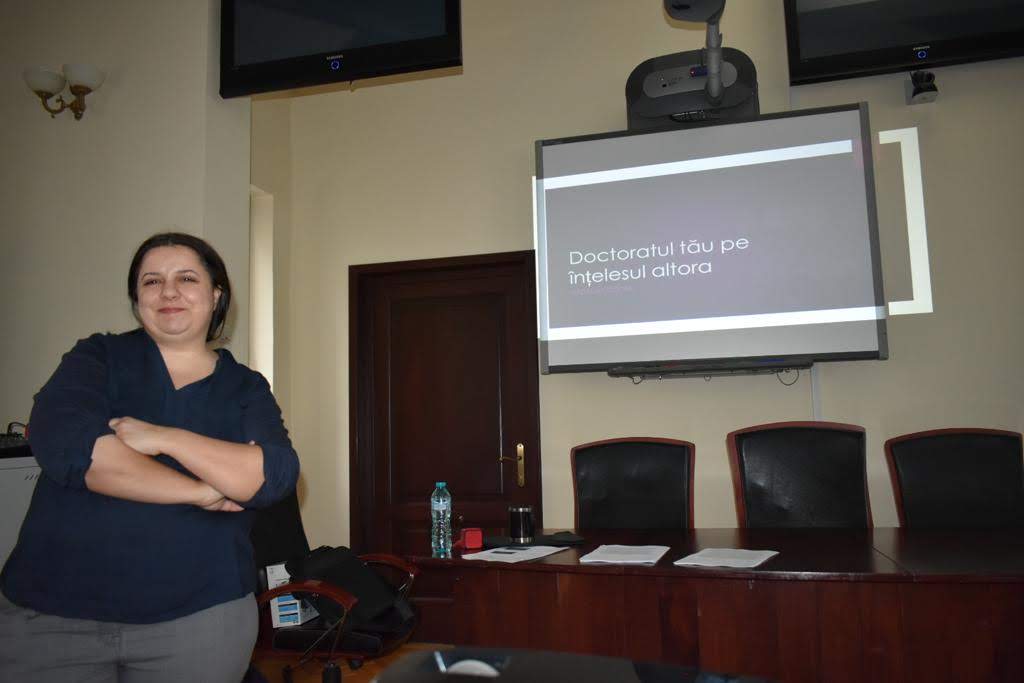"What research is being done in Romania anyway?" - I hear this question, in this tone, from almost every person who finds out that I want as many people as possible to know about our research results.
My answer is: "I'm not good at judging the level of research, but there are certainly a lot more results in Romania than those we hear about."
In other words, as well as being under-funded, research in Romania is also very under-communicated. With a little more concern for visibility, I am convinced that it would also receive more support in public policy.
Science communicators are the missing link between researchers and the general public in our country.
A summary if you're in a hurry - science communicators:
- know the public better and what they want
- can suggest which aspects of a research are of interest to a particular audience (general public, entrepreneurs, policy makers, etc.)
- save time for the researcher, who does not have to invest a lot of time in communication
- save journalists time by suggesting potential topics of interest
- make suggestions for graphics or videos that can be made from a particular study
- works with graphic designers and artists to illustrate as well as possible, but also in an interesting manner, the subject of a research
- suggests more efficient ways to package information
- build strategies for press relations and social media channels
- they never take the place of the researcher in interviews or public statements
Also known as "press officers", "public information officers", "communication specialists", "public relations officers" are usually employed by the communication/ marketing/ promotion departments of companies. Whereas 20 years ago their presence in Romanian universities was a rarity, now almost all universities and many research institutions have at least one communications officer.
A further step - and I am convinced that this will happen - would be for a much greater part of the communication effort to be dedicated to research results.
Why would teachers or researchers use a communicator?
The linear model of communication, in which information passes through a PR specialist before reaching the journalist, is most effective when the number of people reached by a message is compared to the number of hours spent communicating.
[Reminder: we talked here about the various models of science communication in an institution, here (language: Romanian) and here (language: Romanian) about the researcher-journalist relationship and here (language: Romanian) on the relationship between researcher and communicator].
The existence of a communication specialist as an intermediary between the researcher and the press is not a gesture to diminish the importance of the scientist, but rather a way to make the time the researcher spends communicating more efficient, especially as lack of time is the most cited reason for researchers not to communicate.
Of those three communication models presented here , communication mediated by a specialist is most effective. When this communication is left to researchers, they end up spending a considerable amount of time dealing with communication and are not rewarded. Conversely, when an institution does not promote anything pro-actively, but only responds to journalists' requests, the most valuable research in the institution is likely to remain invisible.
The intermediary that can solve both problems is the science communicator.
When we are flooded with news about "British researchers who have discovered that", it is harder to imagine that this visibility is the strategic and coordinated effort of communications offices. The fact that the results of a study carried out at a European university are even heard of in Romania is first and foremost the merit of the researcher, but also of the specialist dedicated to science communication.
The use of a media relations specialist and other benefits beyond saving researchers time. Media relations specialists have more experience, more contacts and resources, rely on a coherent press strategy, can ensure a balance in the visibility of an institution's research lines. In addition to producing press releases or other press materials, PR specialists have the role of identifying the most interesting scientific topics and facilitating contact between journalist and researcher. They can propose and work with graphic designers on related materials that would fit into the communication - photos, infographics, visualisations, video montages, etc. In addition, the approach to communication will be strategic: the message is not 'thrown' into the public space, but is launched through several channels, tailored for different audiences.
Because of the development of media in which information is almost instantaneous (radio, television, internet), journalists feel the pressure of time much more strongly. As a result, journalists have less and less time left to search for original information and depend more and more on press releases and press conferences. The presence of a media relations specialist who can provide them with 'semi-prepared' information is a huge help, and science stories have an added advantage over other fields because they are more credible.
In general, public relations specialists do not also function as spokespersons for researchers, in the sense that they cannot and should not take their place in interviews, public statements, etc. Even communicators with a background in science use their skills rather to identify potential topics and ask the right questions, rather than to be a substitute for the researcher in the public space.
If after all this you're wondering how to get a science communicator, you can contact me.
To better understand the communication model, read all the articles in this series.
- Three possible models for science communication
- The relationship between researcher and communication specialist (1)
- What a communication specialist is for (2)
- The relationship between researcher and journalist (1)
- Ground rules for dealing with journalists (2)
- Direct researcher - public communication (1)
Every month, I send a newsletter about Science & Communicationwith articles on how research can be better promoted in Romania. Includes what I write here on the blog, but also recent articles in other languages that I recommend and comment on.
You can subscribe here.





